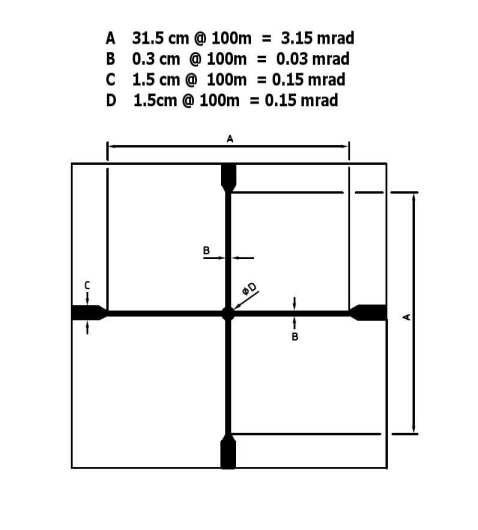Odd coincidence. After three or more years of just the basic specs on the Magnus range from Leica online, they have put up some more in the past few hours. There is now reticle subtension data at last, but as yet no external dimensions.
If you thought using a plywood test jig and a measuring stick out on the footy paddock to assess windage & elevation accuracy and reticle subtensions was a bit ambitious, here are Leica's new subtension figures for comparison... nothing wrong then with the No.8 approach !
I was recently asked why all the fuss over a 5% error in the windage and elevation. My reply is that it wouldn't be an issue for me in a scope that was not offered with target turrets. That kind of error isn't going to make any difference to conventional zeroing. But if turrets are offered as an option, and even if only a small % of sales ever have them fitted, and yet fewer shooters actually use them, the accuracy requirement in the elevation & windage controls for target or longrange use is there, and those customer's expectations should be met. Below- par dial accuracy wouldn't be acceptable in a scope where dials were fitted on every unit as standard, say a PM-II, NXS, or plenty of others.
What is acceptable? Well I'd be interested to hear others views, but for me and this scope it would be +/- 0.05mrad inasmuch as the POI needs to be closer to the required elevation from a given dial setting than either of the adjacent settings 0.1mrad/1 click on either side. I plan on shooting to just 600 metres, requiring winding on 4 milliradians of up elevation from a 200m zero, so +/-0.05mrad equates to a +/-1% requirement.
Welcome guest, is this your first visit? Create Account now to join.
Welcome to the NZ Hunting and Shooting Forums.
Search Forums
User Tag List
Results 1 to 10 of 10
Thread: Leica's Big Riflescope
Threaded View
-
29-04-2014, 01:34 AM #4
Similar Threads
-
Leica ER 3.5-14
By K95 in forum Firearms, Optics and AccessoriesReplies: 4Last Post: 12-01-2014, 10:30 PM
Tags for this Thread
Welcome to NZ Hunting and Shooting Forums! We see you're new here, or arn't logged in. Create an account, and Login for full access including our FREE BUY and SELL section Register NOW!!




 4Likes
4Likes LinkBack URL
LinkBack URL About LinkBacks
About LinkBacks





 Reply With Quote
Reply With Quote


Bookmarks